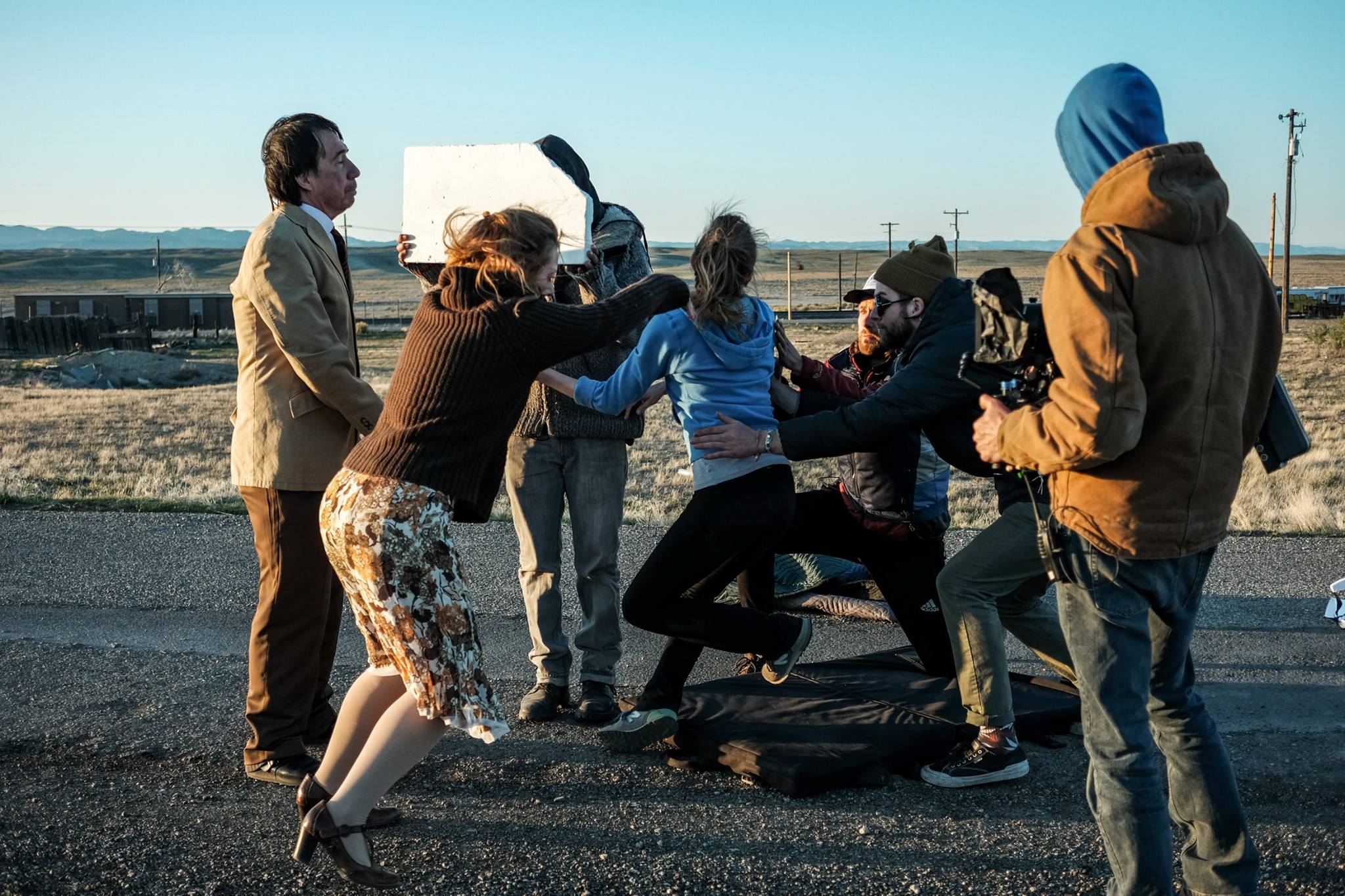Some information may be outdated.
The American West’s landscapes are scattered with the vestiges of bygone dreams and schemes.
Old mine shafts, corrals and homesteads can be found alongside the ruins of Native American structures, dinosaur footprints, and fossils. The Moab area is home to its share of these relics. The abandoned town of Cisco northeast of Moab is a poignant example.
This fall, filmmaker Adam Rosenberg found the town to be a compelling film location. Rosenberg, whose work has been shown internationally, is based in Boulder, Colorado, and discovered Cisco on the way back from a trip to Moab several years ago.
“I’ve always loved abandoned and decomposing buildings,” he said of his first visit. “Cisco did not disappoint … After we left, Cisco remained stuck in my mind as an amazing potential location for a film or other creative project.”
Eventually, Rosenberg found a project to fit the site.
“A few years later I got the opportunity to direct a music video for the song ‘Canopy’ by Night Idea,” Rosenberg said. “The song is dark and driving, and I knew Cisco could serve as the perfect setting to emulate this mood.”
The short music video for the song by the indie-prog band from Virginia is indeed dark, evoking zombies, mysterious forces and a sad past. It can be viewed on Rosenberg’s website, www.mradamrosenberg.com, or at: www.youtube.com/watch?v=o5jzlIim_2s.
Cisco got its start in 1883, as a fuel and water stop along the Denver & Rio Grande Western Railroad line. Population increased as ranchers in the surrounding areas began sending their cattle to Cisco to ship them by train to Kansas City for slaughter.
By 1887, Cisco had its own post office, several stores, a restaurant and a hotel.
Sheepherders began to use Cisco as well, grazing their flocks in the surrounding range land and taking advantage of the train for shipping.
When the steam locomotive gave way to trucks and diesel trains and Cisco was no longer a necessary water stop or shipping point, extraction supported a fresh boom. Minerals, oil, and gas were discovered in the area.
But eventually, the boom went bust. The economy declined, and was finally doomed by the construction of a new interstate.
Interstate 70 opened to traffic in 1970, and the freeway’s route bypassed the dwindled town of Cisco. By the late 1980s, nearly all of Cisco’s residents had left; now, it is an abandoned ghost town.
Like any ghost worth its salt, Cisco can still put a spell on the living. A least a few popular artists have been inspired by the town. Johnny Cash reportedly wrote his 1968 song “Cisco Clifton’s Fillin’ Station” about H. Ballard Harris, who ran a shop and gas station near Cisco during its declining years. The song’s lyrics describe the friendly small-town feel of the roadside stop and its impending failure when the interstate routed travelers away. Harris continued living alongside his defunct business until his last years. Roadtrippers who stopped to greet him and take a look at the unique structures on the property – many were pieced together from abandoned movie sets – have blogged about his charismatic storytelling.
Movie set pieces were available to Harris in the wake of multiple directors who were also inspired by the Cisco scenery. The 1971 cult movie “Vanishing Point,” the iconic 1991 “Thelma & Louise” (for which at least one popular Moab event is named), and the 2005 movie “Don’t Come Knocking” all feature scenes shot in Cisco.
Cisco’s emptiness and decay certainly suggest a haunting loneliness. But Cisco has real connections to living, thriving people and places, especially Moab.
Charlie Steen, who is credited with launching the uranium boom that changed Moab from a tiny, quiet town to a teeming, prosperous city, was living near Cisco when he struck the fateful rich ore in San Juan County.
Some current residents of Moab remember visiting the store in Cisco, or driving up on Saturday nights for dance halls – some even lived in Cisco in its better days.
And at least one iconic building from Cisco was moved down to a new home in Moab. The Cisco Hotel was brought to Moab in the 1950s, and was located near Main Street until the late 2000s, when it was moved again and converted into a private residence.
Even the empty buildings still in Cisco don’t all seem so far removed from activity and purpose.
“I was amazed by the expanse of decrepit buildings and cars spread across the desert; especially the little hints of people’s lives like dishes left in the sink or a homemade playground,” Rosenberg said.
Visitors to Cisco should remain respectful of the artifacts and their significance to people living in the present.
Colorado filmmaker is the latest to use Cisco as a cinematic backdrop
Appreciate the coverage? Help keep local news alive.
Chip in to support the Moab Sun News.





